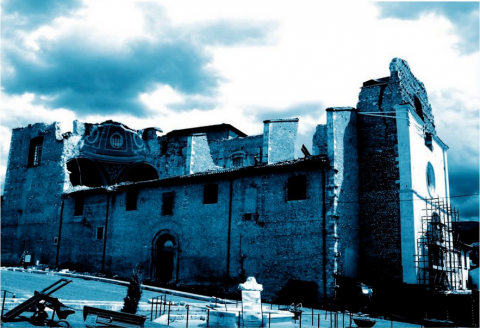Abruzzo, Italy - Policy Making after Disasters - The case of post-earthquake Abruzzo

The OECD has assisted the government of Italy in designing a long-run strategy to re-launch the economy of the Abruzzo region (Italy), after the 2009 earthquake that struck a wide area with the city of L’Aquila (the Regional Capital) as its epicentre.
The report “Policy making after disasters: Helping regions become resilient. The case of post-earthquake Abruzzo, Italy”, identifies specific policy recommendations and concrete options for Abruzzo to increase its resilience to future shocks. It also draws from the experiences in other OECD regions, either where natural disasters have caused the rethinking of the development model, or where long-term decline has forced such a rethink. These shared experiences can then provide valuable lessons on the types of policy and governance options for rebuilding a stronger, more resilient and more prosperous region over the long term.
The issues raised in the report can help governments to rethink regional development policy in advance, both in the case of regions vulnerable to natural disasters and those facing long-term decline.
This report should also be of interest to decision makers, opinion leaders and community residents who want to identify options and instruments for implementing change in their own localities.
From the analysis of the Abruzzo case, eight guiding recommendations for building resilient regions after a natural disaster can be drawn. These lessons provide a starting point and a guiding framework to monitor experiences and good practices for recovery.
The content of this report and the eight guiding recommendations address neither the crucial aspects of pre-disaster planning nor the immediate aftermath of a disaster. The focus is instead on the design and implementation of a longer-term development strategy. As it is argued in the report, the resilience of a regional system strongly depends on the quality of the public and private policy responses to natural or social shocks.
The eight guiding recommendations for building resilient regions after a natural disaster are:
- Make sure that short term decisions do not constrain long-term options
- Identify the economic base and the social and economic drivers specific to the region to increase its resilience.
- Develop an integrated strategy to redevelopment after a natural disaster by strengthening the dialogue among stakeholders to raise the profile of needed reforms and quality of decisions.
- Strategic choices have to be locally led.
- Use the occasion of a crisis to introduce reforms or standards for the country.
- Foster public participation to help decision making.
- Make public deliberation a regular component of the regional development strategy.
- Build trust, increase accountability of policy-making and improve capacity of administrations
Read the full report here.
